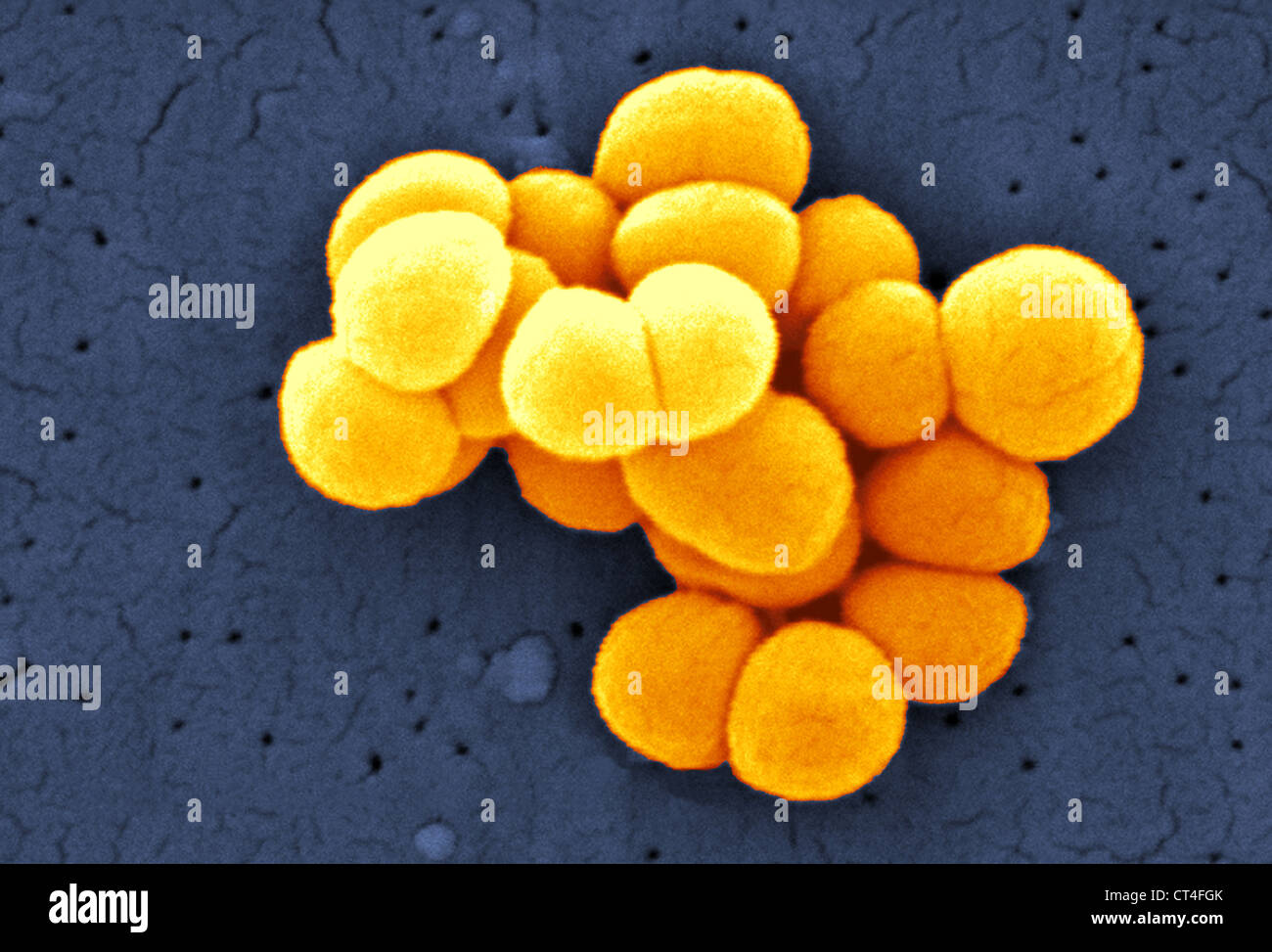MICROCOCCUS LUTEUS

Image details
Contributor:
BSIP SA / Alamy Stock PhotoImage ID:
CT4FGKFile size:
25.6 MB (892.9 KB Compressed download)Releases:
Model - no | Property - noDo I need a release?Dimensions:
3630 x 2467 px | 30.7 x 20.9 cm | 12.1 x 8.2 inches | 300dpiDate taken:
18 July 2007Photographer:
CDC/ JANICE CARR / BSIPMore information:
Micrococcus luteus, scanning electron micrograph (colorized SEM, x 21 930) Micrococcus luteus is Gram-positive coccus, strict aerobe, usually present under the form of diplococci (pairs), tetrads (four) and sarcinas (eight). This bacterium is a saprotroph (feeding on decaying organic matter) and not pathogenic for mankind except for immunocompromised persons affected by AIDS. Micrococcus luteus (regrouping the old species Micrococcus flavus, Sarcina lutea and Sarcina flava) develop in the environment (water, soil, air, dust) and on the skin of mammals (saprotroph residing flora), of which it decomposes the sweat (responsible for bad smells). It has been incriminated in cutaneous and pulmonary infections among immunocompromised patients. Micrococcus luteus > Micrococcus > Micrococcaceae > Actinomycetales > Actinomycetes. Under a high magnification of 21930x, this scanning electron micrograph (SEM) depicted some of the ultrastructural morphologic features displayed by this group of Gram-positive Micrococcus luteus bacteria. The specimen was obtained from a pure culture that was raised on a polycarbonate filter, for the purpose of identification of the organism. Being Gram-positive, these organisms appear blue to violet when stained using a Gram-stain technique. M. luteus is an aerobe, which means that it thrives in an oxygen rich environment, and is normally found living in the human mouth, mucosal linings of the upper pharynx, and respiratory tract. Those who may be immunocompromised such a AIDS patients, or those on chemotherapy, need to be concerned about these bacteria, however, these organisms are usually considered non-pathogenic.